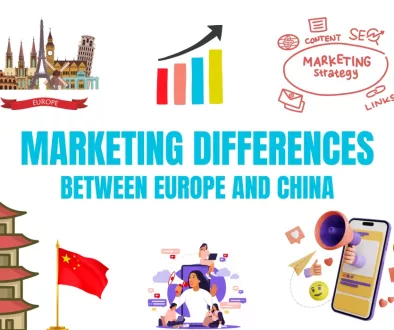Why a Review Can Sell (or Kill) a Product in China
In China, customer reviews are far from being mere comments left after a purchase. They have become pillars of digital reputation, powerful conversion tools, and sometimes even strategic battlegrounds. In a digital environment where consumers are increasingly skeptical of traditional advertising, the voice of fellow customers plays a central role. A single well-placed review can trigger a wave of purchases. On the other hand, a negative, credible, and widely shared review can cause long-term damage to a brand. Understanding this dynamic is crucial for any company seeking to establish itself in the Chinese market.
Reviews – a powerful UGC channel
Chinese culture has long placed value on trusted recommendations. Word-of-mouth among friends and family is deeply embedded in purchasing behavior, and this logic has naturally migrated into digital habits. Chinese consumers—especially younger generations—tend to trust peer reviews much more than classic advertisements. According to a 2023 McKinsey study, over 75% of urban Chinese buyers say they are strongly influenced by user-generated content, particularly on social media platforms. A product’s credibility, therefore, lies more in what others say about it than in how a brand presents itself.

On which platforms?
This phenomenon is reinforced by the structure of Chinese platforms. Xiaohongshu (Red Note), Douyin, Taobao, and JD.com are not just e-commerce or entertainment channels; they are complete ecosystems where customer reviews are omnipresent, highlighted, rated, discussed, and often enriched with photos or videos. On Xiaohongshu in particular, reviews take the form of detailed mini-articles in which users share their personal experiences, compare products, and show real-life usage. These posts are perceived as authentic because they are written by seemingly “ordinary” users with no commercial agenda. In reality, their commercial impact is enormous.

Case Study: Florasis, a brand highlighted by user reviews
One of the most striking examples of a successful review-based strategy is that of Florasis (Hua Xizi), a Chinese cosmetics brand that built a loyal community and skyrocketed its sales thanks to a customer-content-driven approach. Founded in 2017 in Hangzhou, Florasis positioned itself early on as a premium local alternative, combining traditional Chinese aesthetics with quality rivaling international luxury brands. Instead of investing heavily in advertising, the company collaborated with micro-influencers on Xiaohongshu, encouraging spontaneous and detailed reviews of their products.

These reviews, often accompanied by unboxing videos or makeup tutorials, helped build a strong brand narrative. The refined visual identity, poetic and culturally rooted storytelling, and pleasant user experience were all amplified by user-generated content, creating an impression of authenticity. Within a few months, Florasis evolved from a little-known startup to a best-seller on Tmall, generating over RMB 100 million in revenue by its second year. Its limited-edition lipstick, regularly featured in Xiaohongshu posts, sold out within 24 hours after a wave of viral reviews. To this day, the brand continues to generate most of its traffic and awareness through user content, which remains central to its marketing strategy.
Buying Reviews: Good or Bad Idea?
However, this reliance on online reviews also comes with risks. The temptation to buy positive reviews still exists, especially for new brands trying to gain traction. Despite increased regulation, services offering review bundles, photos, and five-star ratings still circulate, aiming to artificially boost a product’s reputation. Although these practices are increasingly detected by platforms, some view them as a necessary “initial investment”—particularly in cross-border e-commerce. Yet the danger is real: overly enthusiastic, vague, or suspiciously timed reviews are quickly flagged as fake by Chinese users. These consumers are highly attuned to authenticity, tone, and detail. A review that feels inauthentic can discredit an entire campaign.

Major platforms are actively fighting this issue. Xiaohongshu has implemented AI systems to detect suspicious patterns, such as similar content from new accounts or waves of identical comments. JD.com verifies that reviews are tied to actual purchases. Douyin is testing verification badges for reviews deemed trustworthy. These measures aim to restore consumer confidence but also raise the bar for brands, which must now produce sincere, nuanced, and culturally adapted content.
Brands and Notice Management
This is precisely where companies like HI-COM step in. Translating user-generated content—whether it’s reviews, feedback, or comments—is not just a linguistic task. It’s a strategic act. A poorly translated review can be misinterpreted, and a culturally off-target localization can turn a neutral comment into a damaging critique. HI-COM supports international brands in managing their online reputation, ensuring the quality of translated reviews, customer responses, and product descriptions. The goal is to preserve meaning, tone, intent, and above all, perceived authenticity.
In a market where every detail matters, nuanced translation can make a real difference. A single poorly chosen adjective, overly formal tone, or awkward expression can create a cultural disconnect and harm a brand’s credibility. Conversely, a well-localized, natural, and fluid review can reassure hesitant customers, answer their doubts, and trigger a purchase.

Finally, brands must adopt a proactive stance when it comes to managing reviews. Responding to criticism, thanking positive feedback, and showing that customer suggestions are taken into account all contribute to building a transparent and responsible brand image. Some companies go even further by incorporating reviews into their product development process, thus closing the loop between customer experience, online feedback, and continuous improvement. This ongoing dialogue is especially appreciated by Chinese consumers, who are drawn to brands that listen and adapt.
Conclusion
In conclusion, a review in China is never insignificant. It is an act of consumption, a storytelling tool, a trust signal, and a decisive factor in a product’s commercial success. For international brands, it is essential to build a review strategy from day one—prioritizing authenticity, working with skilled localization partners, and maintaining a strong connection with their audience. A review can sell, but it can also kill. Best make it your ally!



